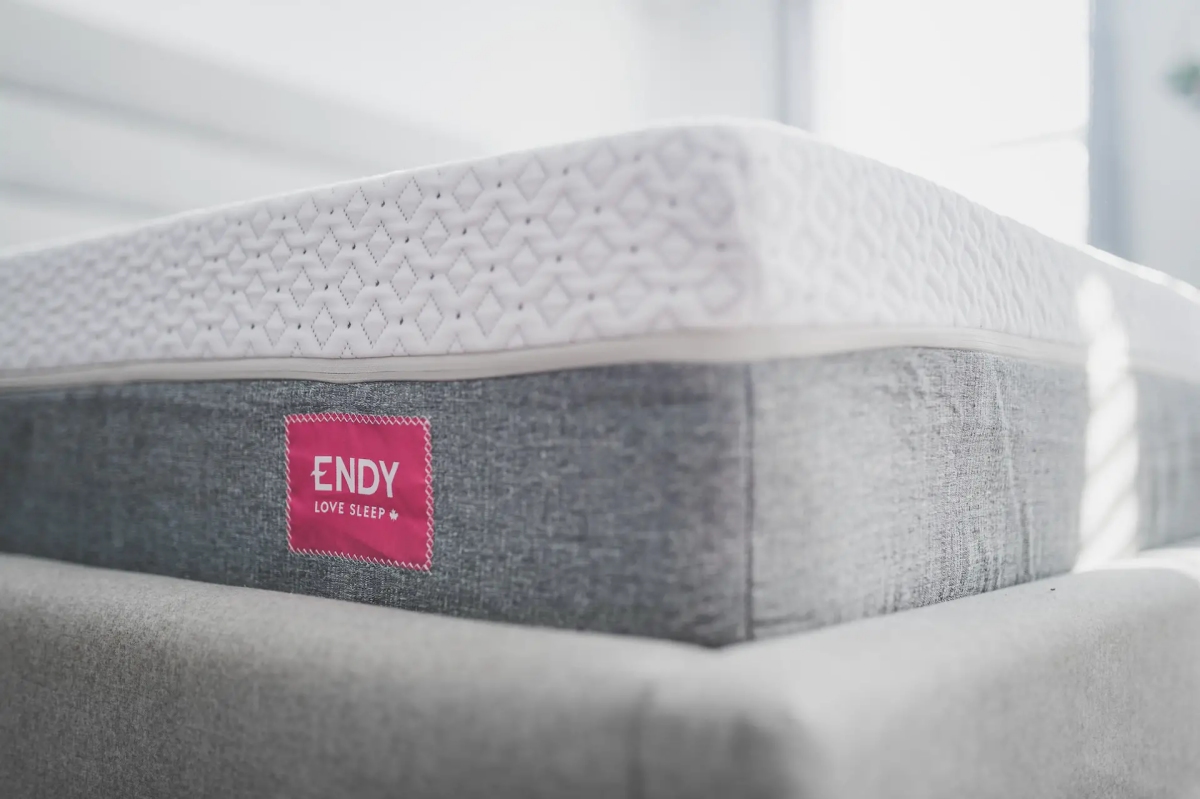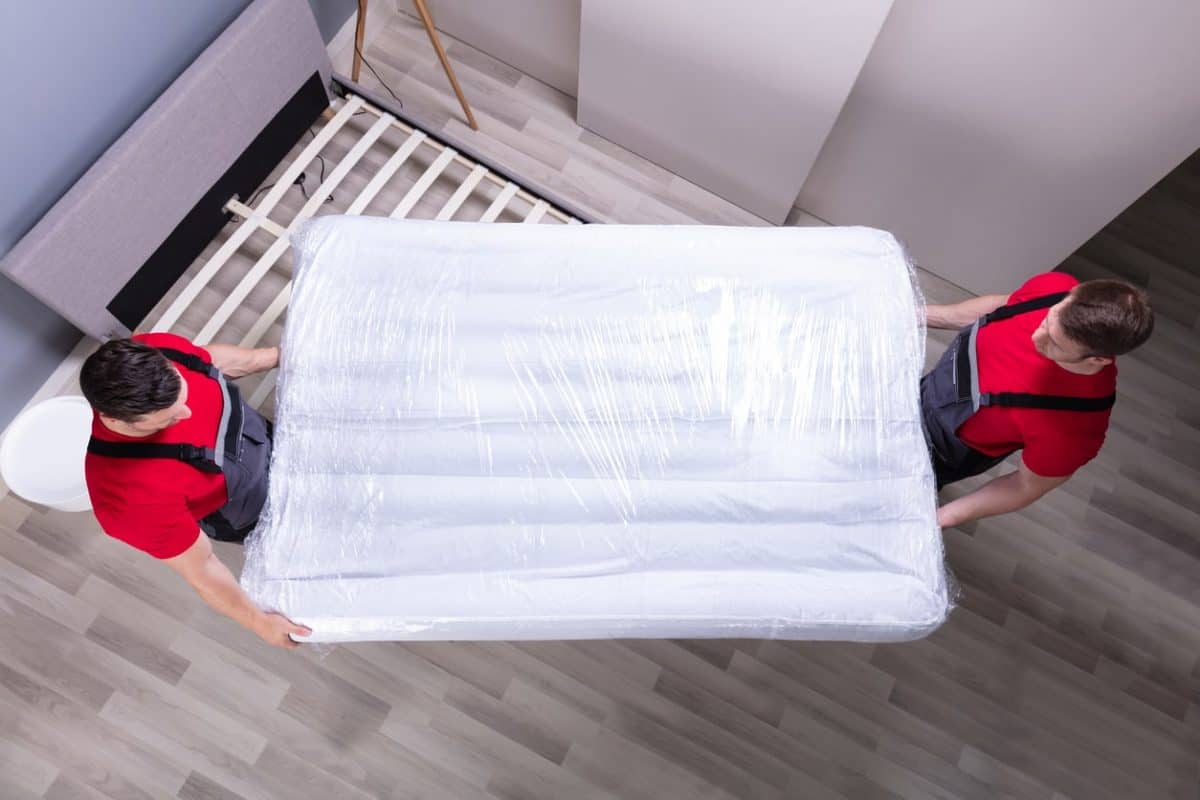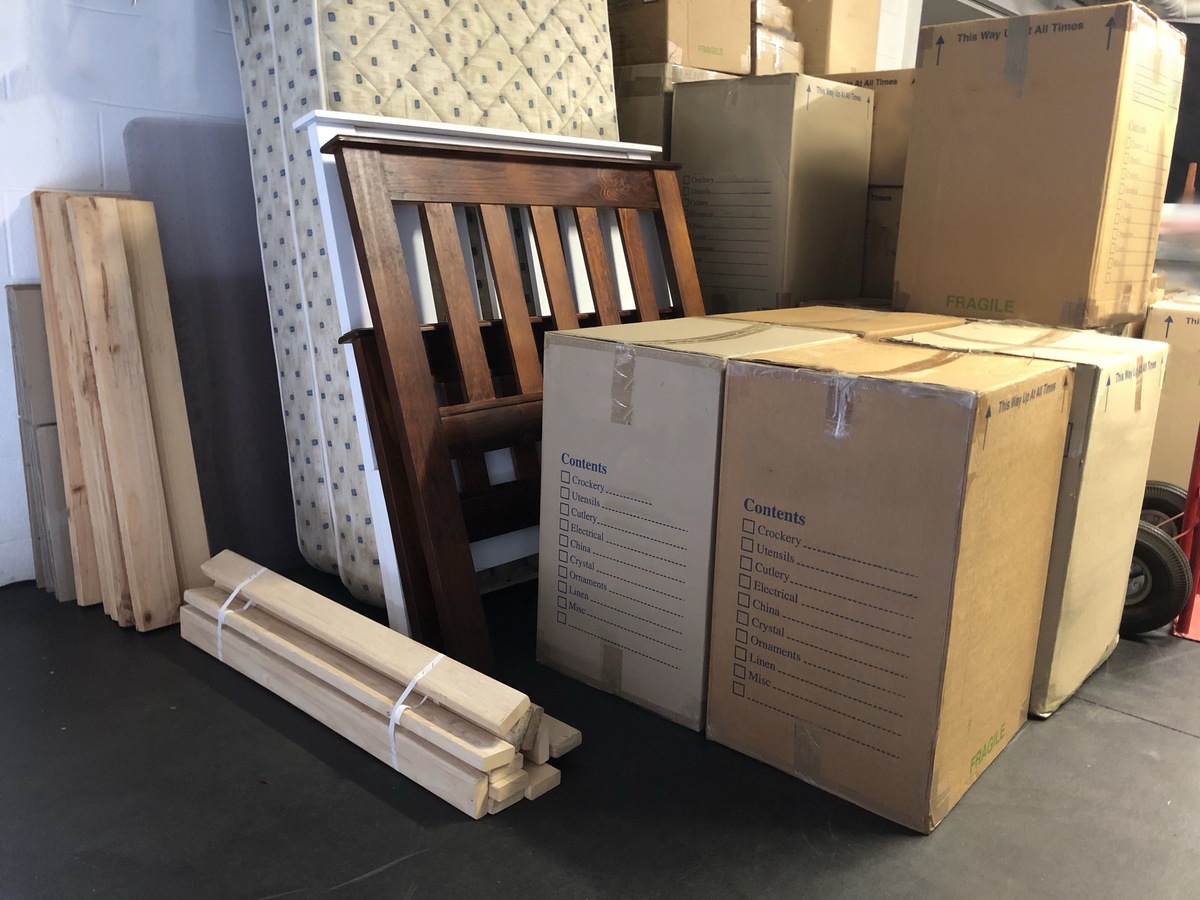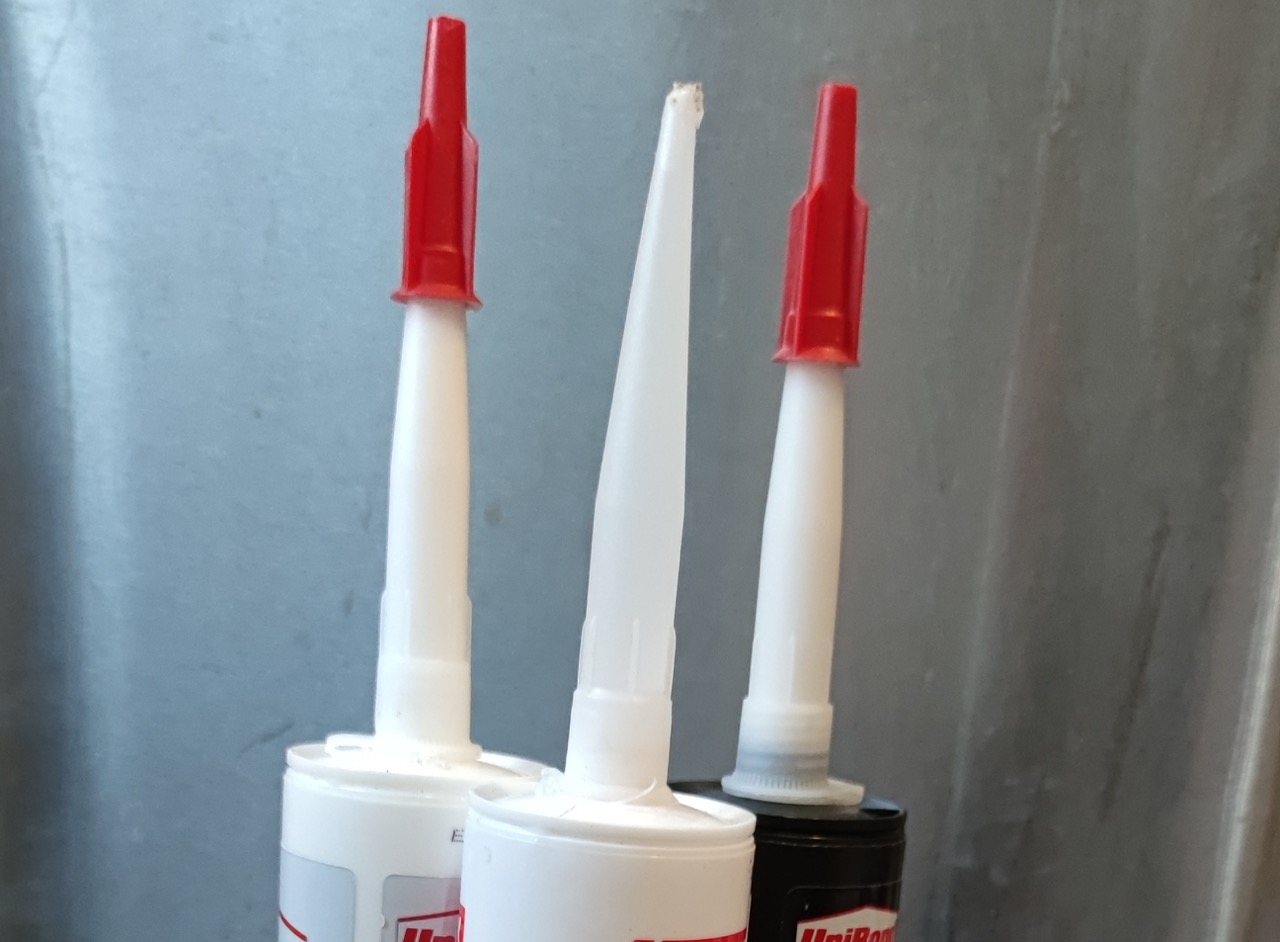Home>Furniture>Bedroom Furniture>How To Open A Mattress Store


Bedroom Furniture
How To Open A Mattress Store
Modified: January 6, 2024
Learn the exact steps to open your own mattress store and become a successful entrepreneur in the bedroom furniture industry. Start your dream business now!
(Many of the links in this article redirect to a specific reviewed product. Your purchase of these products through affiliate links helps to generate commission for Storables.com, at no extra cost. Learn more)
Introduction
Welcome to the world of mattress stores! Whether you are an entrepreneur venturing into the business or a proud owner of an existing store, this comprehensive guide will provide you with valuable insights on how to open and run a successful mattress store.
A mattress store is not just a place where people buy mattresses; it is a sanctuary where individuals go to find comfort, rest, and rejuvenation. As the demand for quality sleep products continues to grow, the mattress industry presents a lucrative opportunity for aspiring business owners.
However, opening a mattress store requires careful planning, strategic decision-making, and a deep understanding of the market. In this article, we will cover the essential steps to help you set up and manage your own mattress store.
Key Takeaways:
- Choose a prime location, reliable suppliers, and knowledgeable staff to create a successful mattress store. Effective marketing, inventory management, and exceptional customer service are key to standing out in the competitive industry.
- Continuously monitor and improve your store’s performance by tracking metrics, analyzing sales data, and seeking customer feedback. Stay updated on industry trends and adapt to evolving customer preferences for sustained success.
Read more: How To Open A Mattress In A Box
Choosing a Location for Your Mattress Store
When it comes to opening a successful mattress store, location is key. Selecting the right location can greatly impact foot traffic, visibility, and ultimately, the success of your business. Here are some important factors to consider when choosing a location for your mattress store:
1. Demographics: Study the demographics of the area where you plan to open your store. Consider factors such as age, income level, and lifestyle. Look for areas with a suitable target market, such as young professionals, families, or retirees.
2. Competition: Research the existing mattress stores in the area. While some level of competition is healthy, too much competition can make it challenging for your store to stand out. Look for a location with a balance of demand and limited competition.
3. Accessibility: Ensure that your store is easily accessible to your target market. Look for a location near major roads, with ample parking space. Consider the proximity to public transportation and the convenience for customers to reach your store.
4. Visibility: A visible storefront can attract customers and increase foot traffic. Look for a location with high visibility, such as a busy street or a shopping center. Consider the signage options and the opportunity to showcase your store’s branding.
5. Space and Layout: Evaluate the size and layout of the potential location. Ensure it has enough space to display a variety of mattresses and create an inviting shopping environment. Consider the possibility of future expansion, if needed.
6. Costs: Keep in mind the financial costs associated with your chosen location. Consider factors such as rent, utilities, and taxes. Choose a location that fits within your budget while still meeting the needs of your business.
7. Market Potential: Research the market demand for mattresses in the area. Look for locations with growing populations or areas where new housing developments are taking place. Consider the potential for repeat customers and word-of-mouth referrals.
Remember, selecting the right location for your mattress store is a crucial step towards its success. Take the time to thoroughly research and evaluate various options to ensure that your chosen location aligns with your business goals and target market.
Finding Suppliers and Inventory for Your Mattress Store
One of the key factors in running a successful mattress store is having a reliable and diverse inventory of mattresses. Finding the right suppliers and building a strong inventory network is essential. Here’s how you can go about finding suppliers and managing your inventory:
1. Research Suppliers: Start by researching mattress manufacturers and wholesalers in your area or online. Look for reputable suppliers with a wide range of mattress options and good customer reviews. Consider reaching out to industry associations or attending trade shows to connect with potential suppliers.
2. Establish Relationships: Contact potential suppliers and schedule meetings or site visits to assess the quality of their mattresses. It’s important to establish good relationships with your suppliers to ensure reliable deliveries and favorable pricing terms. Ask about their warranty policies, return procedures, and after-sales support.
3. Quality and Variety: Choose suppliers that offer a range of mattresses to cater to different customer preferences and budgets. Make sure their mattresses meet industry standards for comfort, durability, and safety. Test out the mattresses yourself to ensure their quality meets your standards.
4. Pricing and Margins: Compare pricing and negotiate favorable rates with your suppliers. Look for discounts on bulk orders or long-term contracts. Consider the margins you need to maintain profitability while remaining competitive in the market.
5. Inventory Management: Develop a system to track and manage your inventory effectively. Utilize inventory management software or tools to keep tabs on stock levels, reorder points, and sales data. This will help you optimize your inventory and avoid stockouts or excess inventory.
6. Supplier Performance Evaluation: Regularly evaluate your suppliers based on factors such as product quality, on-time delivery, and customer service. If a supplier consistently falls short, consider finding alternatives to maintain the quality of your inventory and customer satisfaction.
7. Explore Dropshipping: Consider partnering with mattress manufacturers that offer dropshipping services. This allows you to sell their mattresses without the need to handle inventory or shipping logistics. Research dropshipping programs to find partners who offer quality products and reliable fulfillment services.
Remember, choosing reliable suppliers and managing your inventory effectively will ensure that your mattress store has a strong and appealing selection of mattresses for your customers to choose from. Building strong relationships with suppliers and continuously evaluating your inventory will help you stay competitive in the market and provide a positive shopping experience for your customers.
Setting Up Your Mattress Store
Setting up your mattress store requires careful planning and attention to detail to create a welcoming and functional space for your customers. Here are some essential steps to follow when setting up your mattress store:
1. Store Layout and Design: Plan the layout of your store to maximize space and create a comfortable shopping environment. Consider factors such as the flow of foot traffic, the placement of display areas, and the arrangement of mattresses for easy browsing. Choose a design that reflects your brand and creates a calming atmosphere.
2. Display and Merchandising: Display a variety of mattresses to showcase the range of options available to your customers. Arrange the mattresses by type, size, or firmness level to make it easier for customers to navigate. Use visual merchandising techniques like attractive displays, signage, and lighting to draw attention to specific products.
3. Comfort Testing Area: Set up a designated area where customers can lay on the mattresses to test their comfort and support. Provide pillows and beddings for customers to get a feel for the full sleep experience. Ensure the area is clean and well-maintained, and consider using hygienic mattress protectors.
4. Point of Sale (POS) System: Implement a reliable POS system to handle transactions and inventory management. Choose a system that integrates with your inventory software and provides detailed sales reports. Train your staff on how to use the POS system effectively.
5. Lighting and Ambiance: Pay attention to lighting choices to enhance the appearance of your store. Opt for warm and inviting lighting that creates a cozy atmosphere. Consider adding adjustable lighting options to highlight specific mattresses or areas.
6. Furniture and Accessories: Incorporate complementary furniture and accessories into your store design. Add comfortable seating areas for customers to relax and discuss their needs with your staff. Include displays of bedding accessories, such as pillows, sheets, and mattress protectors, to offer a complete sleep solution to your customers.
7. Technology and Online Presence: Embrace technology to enhance your store’s appeal. Offer interactive displays or virtual reality experiences to help customers visualize their potential sleep arrangements. Also, create an engaging and user-friendly website to showcase your inventory and drive online sales and inquiries.
8. Compliance and Safety: Ensure your store complies with all relevant regulations and safety standards. Display all necessary product information and warranty details prominently. Maintain good hygiene practices and follow guidelines for cleaning and sanitizing mattresses regularly.
By carefully considering the layout, design, and functionality of your mattress store, you can create an inviting space that emphasizes the comfort and quality of your products. Providing customers with an exceptional shopping experience will ultimately contribute to the success and growth of your business.
Hiring and Training Staff for Your Mattress Store
When it comes to running a mattress store, hiring and training the right staff is crucial. Your staff will be the face of your business, interacting with customers and providing valuable product knowledge. Here are some key steps to follow when hiring and training staff for your mattress store:
1. Determine Staffing Needs: Assess your store’s size and expected foot traffic to determine how many staff members you will need. Consider the different roles required, such as sales associates, customer service representatives, and delivery personnel.
2. Job Descriptions and Requirements: Create detailed job descriptions that outline the responsibilities and skills required for each position. Specify any necessary qualifications or experience, such as knowledge of mattresses and sleep products. This will help attract qualified candidates.
3. Hiring Process: Advertise job openings through various channels, such as online job boards, local newspapers, or through your store’s website and social media platforms. Review resumes and conduct interviews to assess candidates’ relevant skills, customer service abilities, and temperament.
4. Product Training: Once you have hired your staff, provide comprehensive training on your inventory of mattresses and sleep products. Train them on the features, benefits, and differences between various mattress types, brands, and models. This will enable them to confidently assist customers in finding the right mattress for their needs.
5. Sales Training: Equip your staff with strong sales skills to effectively communicate with customers and close sales. Train them on techniques to understand customer needs, overcome objections, and present the value of different mattress options. Emphasize the importance of exceptional customer service throughout the sales process.
6. Customer Service Training: Teach your staff the importance of excellent customer service, including how to greet customers, actively listen to their needs, and provide personalized recommendations. Train them on handling customer inquiries, complaints, and returns in a professional and empathetic manner.
7. Ongoing Education and Development: Encourage continuous learning and development among your staff. Provide them with resources and opportunities to stay updated on industry trends, new mattress technologies, and sales techniques. Consider hosting regular training sessions or inviting experts to conduct workshops for further skill enhancement.
8. Performance Evaluation: Regularly assess your staff’s performance and provide feedback to help them improve. Set achievable targets and reward outstanding performance to motivate your team. Address any performance issues promptly and offer support and training if needed.
Remember, hiring and training the right staff is essential for delivering exceptional customer experiences. Well-trained and knowledgeable staff will not only help drive sales but also build long-term customer loyalty. Invest in your staff’s development and create a positive work environment to foster their success and the success of your mattress store.
Research the market demand in your area, create a business plan, and secure financing. Find a reliable supplier and location, and focus on providing excellent customer service to stand out in the competitive mattress industry.
Read more: How To Open A Casper Mattress
Marketing and Promoting Your Mattress Store
Effective marketing and promotion play a vital role in attracting customers to your mattress store and increasing awareness of your brand. Here are some key strategies to market and promote your mattress store:
1. Create a Strong Brand Identity: Develop a unique and appealing brand identity that resonates with your target market. This includes a memorable logo, a consistent color scheme, and a compelling brand message. Use these elements consistently across all marketing materials and platforms.
2. Online Presence: Build a strong online presence through a professional website and active engagement on social media platforms. Optimize your website for search engines by incorporating relevant keywords and creating informative, engaging content. Use social media to showcase your mattresses, share sleep tips, and engage with your audience.
3. Local Advertising: Utilize local advertising channels to target potential customers in your area. This might include placing ads in local newspapers, magazines, or on billboards. Consider sponsoring community events or partnering with local influencers to increase visibility and brand awareness.
4. Referral Programs: Encourage satisfied customers to refer their friends and family to your store. Offer incentives, such as discounts or rewards, for successful referrals. Implement a referral program that is easy for customers to participate in and track their referrals.
5. Online Reviews and Testimonials: Positive online reviews and testimonials can greatly influence potential customers. Encourage satisfied customers to leave reviews on platforms like Google, Yelp, and social media. Monitor and respond to reviews promptly, both positive and negative, to show that you value customer feedback.
6. Content Marketing: Create informative and helpful content related to sleep, mattress buying tips, and overall sleep health. This can be in the form of blog posts, videos, or infographics. Share this content on your website, social media platforms, and through email newsletters to position your store as a trusted source of sleep knowledge.
7. Special Promotions and Discounts: Offer special promotions, discounts, or bundle deals to attract customers. Consider partnering with mattress manufacturers or other local businesses for joint promotions or exclusive offers. Highlight these promotions on your website, social media platforms, and in-store signage.
8. Community Involvement: Get involved in community events and sponsor local organizations or sports teams. This helps to build goodwill in the community and increase brand recognition. Attend local fairs, markets, or trade shows to showcase your mattresses and connect with potential customers.
9. Email Marketing: Build an email list of interested customers and send regular newsletters or promotions. Offer exclusive deals or early access to sales for subscribers. Personalize your emails to make customers feel valued and keep them informed about new products or upcoming events.
Remember, an effective marketing and promotion strategy takes time and consistency. Monitor the success of different marketing channels and adjust your strategies accordingly to maximize your reach and impact. By employing a variety of marketing tactics, you can attract a wider audience and increase foot traffic to your mattress store.
Managing Inventory and Sales in Your Mattress Store
Effective inventory and sales management are essential for running a successful mattress store. Proper management ensures that you have the right products in stock, maximize sales, and provide excellent customer service. Here are some key tips for managing inventory and sales in your mattress store:
1. Inventory Control System: Implement an inventory control system to keep track of your mattress stock. This can be done manually or by using inventory management software. Monitor stock levels regularly, and set up automatic reordering to avoid running out of popular mattress models.
2. Demand Forecasting: Analyze sales data and trends to forecast demand for different mattress types, sizes, and brands. This helps you anticipate customer preferences and adjust your inventory accordingly. Consider factors such as seasonality, marketing campaigns, and local market trends.
3. Consignment Agreements: Consider entering into consignment agreements with mattress manufacturers or wholesalers. This allows you to display their mattresses in your store without purchasing them upfront. You only pay for the mattresses that are sold, reducing inventory costs and risk.
4. Sales Tracking and Analysis: Monitor and analyze your sales data to identify top-selling mattresses and track the performance of different brands and models. This helps you optimize your inventory selection and focus your marketing efforts. Use sales analytics tools or your POS system to generate reports for analysis.
5. Special Orders: Offer customers the option to place special orders for mattresses that are not currently in stock. This allows you to fulfill specific customer requests without needing to carry a large inventory. Communicate delivery timelines clearly and provide excellent customer service throughout the process.
6. Pricing Strategies: Determine pricing strategies that balance profitability and competitiveness. Regularly analyze market prices, competitor pricing, and customer buying behaviors to set competitive and profitable prices. Consider offering bundle deals or discounts on specific mattress models to increase sales.
7. Staff Training: Train your staff on effective sales techniques, product knowledge, and inventory management processes. This ensures they can confidently assist customers, recommend suitable mattresses, and provide accurate information about availability and delivery times.
8. Seasonal Sales Campaigns: Plan seasonal sales campaigns to capitalize on consumer buying trends. Offer promotions during peak shopping seasons, like holiday sales or back-to-school promotions. Strategically manage your inventory to align with these campaigns and create a sense of urgency for customers.
9. Return and Warranty Processes: Establish clear policies and guidelines for product returns and warranty claims. Train your staff on how to handle these situations professionally and efficiently. Promptly address customer concerns and ensure smooth and hassle-free resolution processes.
By implementing effective inventory and sales management strategies, you can maintain a well-stocked store, maximize sales opportunities, and provide exceptional customer service. Regularly review and adapt your inventory and sales processes to meet changing market demands and customer preferences.
Providing Excellent Customer Service in Your Mattress Store
Providing excellent customer service is a crucial aspect of running a successful mattress store. Happy and satisfied customers not only make repeat purchases but also become brand ambassadors, referring your store to their friends and family. Here are some key strategies for providing exceptional customer service:
1. Warm and Friendly Greetings: Train your staff to greet every customer with a warm and friendly attitude as soon as they enter your store. A genuine smile and a welcoming approach can create a positive first impression and set the tone for a great customer experience.
2. Product Knowledge: Equip your staff with in-depth product knowledge to help customers make informed decisions. Train them on the features, materials, and benefits of different mattress models, and guide them in understanding customer preferences for firmness, support, and sleeping positions.
3. Active Listening: Encourage your staff to actively listen to customers’ needs and concerns. Teach them to ask questions and engage in meaningful conversations to understand customers’ sleep issues, preferences, and budget. This enables them to provide personalized recommendations and solutions.
4. Comfort Testing and Education: Create a dedicated area where customers can test the comfort of different mattresses. Train your staff to educate customers on the importance of quality sleep, the impact of different mattress features on sleep quality, and the benefits of proper sleeping alignment.
5. Patience and Guidance: Recognize that choosing the right mattress can be a complex decision for customers. Encourage your staff to be patient, providing guidance and allowing customers ample time to test different mattresses. Help them narrow down options and explain the advantages of various choices.
6. Respect Customer Budgets: Understand that customers have different budget constraints. Respect their budget and show them a range of mattresses that fall within their price range. Find the right balance between meeting their needs and upselling without being pushy or disregarding their financial limitations.
7. Transparent Pricing and Policies: Communicate pricing, delivery costs, return policies, and warranty details clearly and transparently. Avoid hidden charges or complex terms and conditions. Make sure your staff can explain these aspects to customers and address any potential concerns or questions.
8. Post-Purchase Follow-Up: Reach out to customers after their purchase to ensure their satisfaction and address any post-sale inquiries or concerns. A follow-up call or email shows that you care about their experience and value their feedback.
9. Resolve Issues Promptly: If a customer raises a complaint or issue, address it promptly and professionally. Train your staff to handle difficult situations with empathy and find appropriate resolutions. A quick and satisfactory resolution can turn a negative experience into a positive one.
10. Continuous Staff Training: Invest in ongoing training and development programs for your staff. This helps them stay updated on product knowledge, customer service techniques, and industry trends. Regular training sessions will enhance their skills and ensure a consistently high level of customer service.
Remember, providing exceptional customer service goes beyond the initial sale. By creating a positive and personalized experience, you can build long-lasting relationships with your customers and foster their loyalty to your mattress store.
Monitoring and Improving Your Mattress Store’s Performance
Monitoring and continuously improving the performance of your mattress store is essential for long-term success. By tracking key metrics and implementing strategic improvements, you can optimize operations, boost sales, and enhance customer satisfaction. Here are some key strategies for monitoring and improving your store’s performance:
1. Set Clear Goals and Objectives: Establish clear and measurable goals for your store, such as sales targets, customer satisfaction ratings, or average transaction value. These goals will serve as benchmarks to gauge your store’s performance and identify areas for improvement.
2. Track Key Performance Indicators (KPIs): Determine the KPIs that align with your goals and regularly monitor them. Common KPIs for mattress stores include sales conversion rates, average sales per customer, customer retention rates, and customer satisfaction scores. Use POS systems or analytics tools to generate reports and track these metrics.
3. Analyze Sales Data: Regularly analyze sales data to identify patterns, trends, and areas of opportunity. Look for insights such as peak sales periods, popular mattress models or brands, and customer preferences. Use this data to make data-driven decisions, such as adjusting inventory levels or focusing marketing efforts on high-demand products.
4. Customer Feedback: Actively seek customer feedback through surveys, online reviews, and in-store interactions. Use this feedback to evaluate the customer experience, identify areas for improvement, and address any issues or concerns. Regularly review feedback to gain insights into customer satisfaction and make necessary adjustments.
5. Competitor Analysis: Keep a close eye on your competitors and analyze their strategies, pricing, and promotions. Stay informed about industry trends and consumer preferences. This information can help you differentiate your store, enhance your offerings, and adjust pricing and promotions to remain competitive.
6. Staff Performance: Regularly assess your staff’s performance and provide feedback and training opportunities to help them excel. Monitor their sales performance, customer interactions, and adherence to company policies. Encourage a culture of continuous learning and improvement among your staff.
7. Visual Merchandising: Evaluate your store’s visual merchandising techniques and displays. Ensure that your mattresses are attractively presented, organized, and easy for customers to navigate. Pay attention to the overall store ambiance, cleanliness, and signage. Regularly update displays to showcase new products and create a fresh shopping experience for customers.
8. Regular Inventory Audits: Conduct regular inventory audits to ensure accuracy and reduce errors. Monitor stock levels, check for damaged or outdated products, and reconcile inventory records. An efficient inventory management system will help prevent stockouts and overstock situations, optimizing your store’s performance.
9. Stay Updated on Sleep Industry Trends: Stay informed about the latest innovations, trends, and consumer preferences in the sleep industry. Attend trade shows, network with suppliers, and read industry publications to gain insights into new technologies, materials, and sleep-related research. This knowledge will allow you to align your store’s offerings with the evolving needs of your customers.
10. Seek Professional Guidance: Consider hiring a business consultant or seeking professional guidance to assess your store’s performance objectively. An experienced consultant can provide valuable insights and recommend strategies to improve efficiency, increase sales, and enhance the overall performance of your mattress store.
Regular monitoring, analysis, and improvement efforts are crucial for the sustained success of your mattress store. By implementing these strategies, you can make informed decisions, adapt to changing market demands, and provide an exceptional shopping experience to your customers.
Read more: How To Store A Mattress
Conclusion
Opening and running a successful mattress store requires careful planning, strategic decision-making, and a commitment to providing exceptional customer service. By following the steps outlined in this guide, you can set yourself up for success in this competitive industry.
Choosing a prime location, finding reliable suppliers, and creating an inviting store layout are essential elements of a successful mattress store. Hiring and training knowledgeable staff who prioritize customer satisfaction is crucial for building long-term relationships with customers.
Marketing and promoting your store effectively will attract customers to your business. Utilize various channels to reach your target audience and highlight the unique features and benefits of your mattresses.
An efficient inventory management system, coupled with wise pricing strategies and continuous monitoring, will ensure you have the right products in stock and maximize sales opportunities. Providing excellent customer service through active listening, personalized recommendations, and post-purchase follow-up will differentiate your store from the competition.
Monitoring your store’s performance by tracking key metrics, analyzing sales data, and seeking customer feedback will allow you to make informed decisions and continuously improve your store’s operations. Stay updated on industry trends and implement strategic improvements to stay ahead of the competition.
Remember, the mattress industry is ever-evolving, and customer preferences change over time. Continuously adapt, innovate, and stay focused on delivering exceptional sleep solutions and experiences to your customers.
With careful planning, dedication, and a customer-centric approach, you can build and grow a successful mattress store—one that offers quality sleep products and makes a positive difference in the lives of your customers.
Frequently Asked Questions about How To Open A Mattress Store
Was this page helpful?
At Storables.com, we guarantee accurate and reliable information. Our content, validated by Expert Board Contributors, is crafted following stringent Editorial Policies. We're committed to providing you with well-researched, expert-backed insights for all your informational needs.













